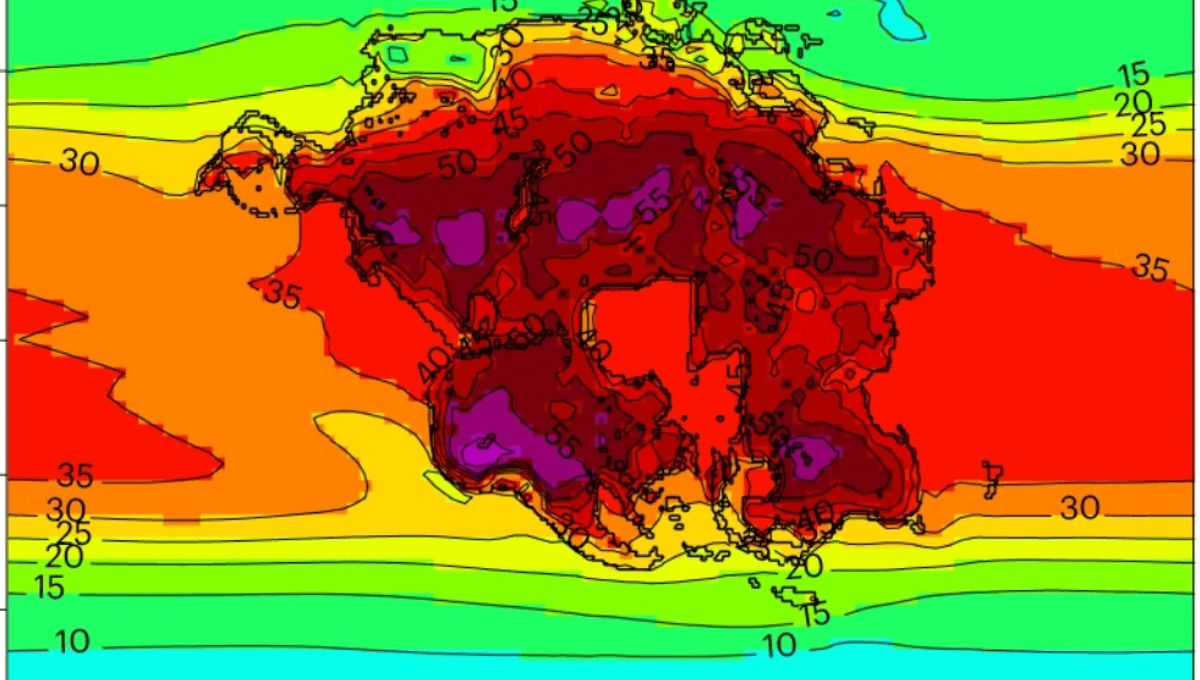
The planet Earth has been around for 4.5 billion years, give or take, and it’s changed a lot in that time. What started as a ball of molten, churning magma eventually chilled out and developed a few small tectonic plates; a few billion years later or so the planet was bedecked in various formations of supercontinents and crawling with life.
But the Earth is still young, cosmologically speaking. We’re barely more than a third of the way through its likely lifespan, and there are plenty of changes left to come.
Unfortunately, it seems we’re not likely to survive them. According to a study published last year, which used supercomputers to model the climate over the next 250 million years, the world of the future will be one once again dominated by a single supercontinent – and it will be virtually uninhabitable for any mammal.
“The outlook in the distant future appears very bleak,” confirmed Alexander Farnsworth, Senior Research Associate with the Cabot Institute for the Environment at the University of Bristol and lead author of the study, in a statement.
“Carbon dioxide levels could be double current levels,” he explained. “With the Sun also anticipated to emit about 2.5 percent more radiation and the supercontinent being located primarily in the hot, humid tropics, much of the planet could be facing temperatures of between 40 to 70 °C [104 to 158 °F].”
The new supercontinent – known as Pangea Ultima, in reference to the ancient supercontinent Pangea – would create a “triple whammy,” Farnsworth said: not only would the world be coping with around 50 percent more CO2 in the atmosphere than current levels; not only would the sun be hotter than it currently is – this happens to all stars as they age, due to the evolving push-and-pull between gravity and fusion going on within the core – but the very size of the supercontinent itself would make it almost entirely uninhabitable. That’s because of the continentality effect – the fact that coastal areas are cooler and wetter than inland areas, and the reason why summer and winter temperatures are so much more extreme in, say, Lawrence, KS, than in Baltimore.
“The result is a mostly hostile environment devoid of food and water sources for mammals,” Farnsworth said. “Widespread temperatures of between 40 to 50 degrees Celsius, and even greater daily extremes, compounded by high levels of humidity would ultimately seal our fate. Humans – along with many other species – would expire due to their inability to shed this heat through sweat, cooling their bodies.”
And here’s the kicker: that’s kind of a best-case scenario. “We think CO2 could rise from around 400 parts per million (ppm) today to more than 600 ppm many millions of years in the future,” explained Benjamin Mills, a Professor of Earth System Evolution at the University of Leeds, who led the calculations for the study. “Of course, this assumes that humans will stop burning fossil fuels, otherwise we will see those numbers much, much sooner.”
So, while the study paints a foreboding picture of Earth many millions of years from now, the authors caution us not to forget the problems just around the corner. “It is vitally important not to lose sight of our current Climate Crisis, which is a result of human emissions of greenhouse gases,” warned Eunice Lo, a Research Fellow in Climate Change and Health at the University of Bristol and co-author of the paper.
“We are already experiencing extreme heat that is detrimental to human health,” she pointed out. “This is why it is crucial to reach net-zero emissions as soon as possible.”
The study is published in the journal Nature Geoscience.
Source Link: The Future Of Earth Is An Uninhabitable Hell World